CNC machining, at its core, involves a series of standard subtractive manufacturing operations, such as turning, milling, drilling, and more. These operations methodically remove layers of excess material from solid workpieces, gradually sculpting them into parts with precise dimensions and features. However, achieving these intricate features is a complex dance of two main steps – roughing and finishing. Each step employs distinct techniques and parameters to transform a raw piece of material into a finely crafted part. In this article, we will delve into the nuances of rough and finish machining, highlighting what sets them apart and why each is crucial in the world of CNC manufacturing. Let's embark on this insightful voyage and discover the delicate balance between removing material and refining a product to perfection.
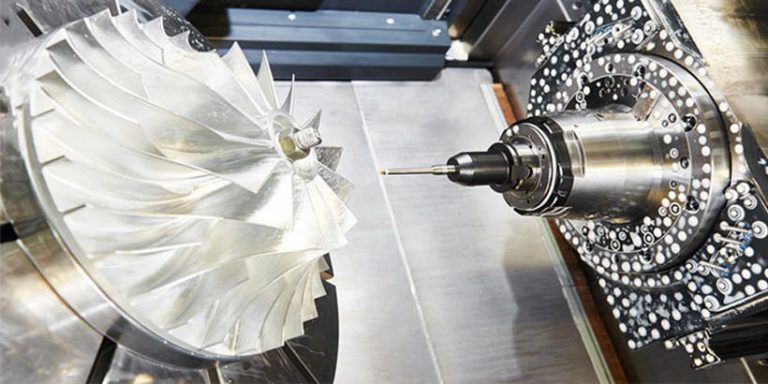
Understanding Roughing in Machining
Roughing in machining, particularly CNC roughing, plays a pivotal role in shaping a workpiece before it undergoes finishing. By understanding and optimizing the various aspects of roughing, from process parameters to tool selection, manufacturers can ensure efficient and effective machining operations.
Defining CNC Roughing: The Initial Stage of Machining
Roughing, often known as rough milling or rough machining, serves as the foundational phase in CNC machining. It's all about rapidly eliminating surplus material from a solid workpiece. This stage is crucial in subtractive manufacturing, which includes processes like turning and milling.
Objectives and Principles of Roughing
The primary aim of roughing in CNC craftsmanship is to remove large quantities of material as efficiently as possible. This sets the stage for subsequent finishing operations. Roughing prioritizes speed over precision, focusing on material shape rather than exact dimensions or surface quality.
Process Parameters in Roughing: Feed Rate, Depth of Cut, and Cutting Velocity
Key parameters in rough machining include: - Feed Rate: Determines how fast the cutting tool moves across the material. - Depth of Cut: The thickness of the material layer removed in a single pass. - Cutting Velocity: The speed at which the cutting tool operates.
Adjusting these parameters can greatly impact the Material Removal Rate (MRR) and tool life.
Material Removal Rate (MRR) in Roughing
In roughing, MRR is a vital metric. It quantifies the volume of material removed per unit time. High MRR in roughing enhances tool life and streamlines the machining process, optimizing time.
Equipment and Tools Used in Rough Machining
Rough cutting tools are designed for durability and rapid material removal. These tools are less refined than those used in finishing, prioritizing material reduction over surface quality. Equipment used in rough machining is robust, capable of withstanding the high stresses of rapid material removal.
Challenges and Considerations in Roughing
Roughing comes with its own set of challenges: - Tool Life: Balancing rapid material removal with the need to protect the tools from excessive wear. - Vibration Level: Managing vibrations caused by aggressive cutting action. - Accuracy: Maintaining close tolerance levels despite the focus on rapid material removal.
Considerations for Effective Roughing in Machining
Effective roughing in machining hinges on optimizing key parameters like feed rate, depth of cut, and cutting velocity. Choosing the right machine tools and control software is vital for managing these parameters efficiently. Additionally, effective heat management and the correct use of cutting fluids play a crucial role in maintaining tool life and ensuring the quality of the rough machining process.
Optimizing Machining Parameters for Roughing
To achieve efficiency in roughing: - Feed Rate: Adjust for optimal material removal. High feed rates can lead to rapid material reduction. - Depth of Cut: A deeper cut allows for removing more material per pass, enhancing efficiency. - Cutting Velocity: Balance speed with the durability of rough cutting tools to maintain process efficiency.
Selecting the Right Machine Tool and Control Software
● Machine Tool Selection: Choose robust tools capable of handling the stress of rough machining. Durability and power are key.
● Control Software: Use software that can efficiently manage roughing parameters and tool paths. Precision in control leads to better roughing outcomes.
Managing Heat and Cutting Fluid in Roughing Processes
● Heat Management: Rough machining generates significant heat. Effective cooling methods are essential to protect the tool life and workpiece quality.
● Cutting Fluids: Select appropriate cutting fluids to reduce friction and heat. This also aids in removing chips from the cutting area.
Understanding Finishing Machining
Finishing in CNC machining is a crucial step that follows roughing. It is all about precision, achieving high dimensional accuracy, and creating a quality surface finish. By carefully selecting tools and techniques and finely tuning process parameters, finishing machining significantly enhances the product's overall quality and performance.
The Concept of Finishing Machining in CNC Operations
Finishing machining in CNC operations is the final step in the manufacturing process. It involves refined tools and delicate cuts to achieve the required dimensional accuracy and surface quality. Unlike roughing, finishing focuses on achieving tight tolerances and a smooth, polished appearance.
Objectives and Principles of Finishing
The primary goal of finishing is to enhance the surface finish and dimensional accuracy of the part. It involves: - Aligning with design's dimensions - Improving surface quality for a smooth and polished appearance - Ensuring durability by enhancing resistance to wear and tear
Process Parameters in Finishing: Precision and Accuracy
In finishing machining, process parameters are finely tuned for precision. This includes: - Tight tolerances: Ensuring adherence to close tolerance levels - High dimensional accuracy: Achieving exact dimensions as per design specifications - Quality surface finishes: Creating a visually and functionally superior surface
Achieving Surface Finish and Dimensional Accuracy
To achieve high-quality surface finishes and dimensional accuracy, CNC finishing employs: - Delicate, exact cuts: Using refined tools for precise material removal - Tight control over cutting depth: Ensuring uniform surface texture and flatness - Minimized tool breakage and edge chipping: Maintaining tool integrity for consistent quality
Role of Finishing Machining in Enhancing Product Quality
Finishing machining plays a vital role in the overall quality of manufactured components. It ensures: - Improved performance: Through precise dimensions and improved mechanical properties - Aesthetic appeal: By creating a smooth and refined surface - Longevity: Enhancing the part's durability and resistance to wear
Selecting Tools and Techniques for Finishing
Tool selection for finishing is critical. It involves choosing tools that can provide: - High precision: For exact cuts and adherence to tight tolerances - Smooth surface finishes: Tools that leave minimal marks or scallops - Durability: To maintain quality over numerous finishing passes
Key Factors in Finishing Machining
Finishing machining is a critical phase where attention to detail is paramount. Ensuring dimensional accuracy, tailoring the process to the part's application, and balancing cost with quality are key factors that drive the success of finishing operations in CNC machining. By focusing on these elements, manufacturers can achieve the desired precision and quality, while maintaining efficiency and cost-effectiveness.
Ensuring Dimensional Accuracy During Finishing
● Precision Techniques: Utilize precise machining techniques to align closely with the design's dimensions.
● Tight Tolerances: Achieve high dimensional accuracy by adhering to tight tolerances.
● Measurement and Verification: Regularly measure and verify dimensions throughout the finishing process to ensure accuracy.
Tailoring the Finishing Process to the Part's Application
● Application-Specific Requirements: Consider the part's end use to determine the required surface finish and dimensional accuracy.
● Customized Techniques: Use finishing techniques, such as abrasive cutting or micro-precision machining, that are best suited to the part's intended function.
● Material Considerations: Select appropriate materials and tools that align with the part's application, ensuring durability and functionality.
Balancing Cost and Quality in Finishing Operations
● Cost-Efficiency: Strive for a balance between high-quality finishing and cost-effectiveness.
● Optimizing Processes: Streamline finishing processes to reduce time and resource consumption without compromising on quality.
● Tool Life Management: Use tools that offer both high-quality results and longevity, reducing the need for frequent replacements.
Comparing Rough and Finishing Machining
Roughing and finishing in CNC machining are complementary processes, each with its unique objectives, approaches, and tooling requirements. Roughing rapidly reduces a workpiece to a near-final shape, focusing on speed over precision. Finishing, on the other hand, refines the workpiece to meet exact specifications, focusing on precision, surface quality, and dimensional accuracy. Understanding the differences between these processes is crucial for efficient and effective machining operations.
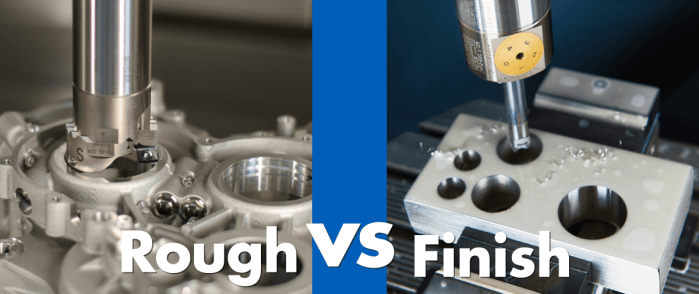
Purpose and Approach: Contrasting the Two Processes
Roughing and finishing in CNC machining serve distinct purposes and approaches: - Roughing: Focuses on rapidly eliminating surplus material. Its approach is less about precision and more about reducing a workpiece to a rough shape. - Finishing: Concentrates on achieving high dimensional accuracy and a quality surface finish. It involves delicate, exact cuts to align with the design's dimensions.
Process Parameters and Material Removal Rate (MRR) Analysis
● Roughing: Has high Material Removal Rate (MRR) due to aggressive cutting. It involves higher feed rates and deeper depths of cut.
● Finishing: MRR is lower as the focus shifts to precision. It uses finer feed rates and shallower depths of cut to ensure accuracy.
Impact on Surface Quality and Tolerance Levels
● Roughing: Leaves a rough surface, not adhering closely to tolerance levels.
● Finishing: Significantly improves surface quality, achieving smooth, polished appearances and adhering to tight tolerances.
Cost and Time Efficiency in Both Processes
● Roughing: More cost-effective and faster due to rapid material removal.
● Finishing: Takes longer and may cost more, due to the precision and care needed for quality surface finishes and dimensional accuracy.
Surface Finish and Dimensional Accuracy Considerations
● Roughing: Prioritizes material removal over surface finish and dimensional accuracy.
● Finishing: Focuses on achieving a high-quality surface finish and precise dimensional accuracy, enhancing the part's overall aesthetic and functional quality.
Tooling Differences between Rough and Finishing Machining
● Rough Machining Tools: Designed for durability and rapid material removal. They are robust to handle the high stress of aggressive cutting.
● Finishing Machining Tools: More refined and precise, designed for exact cuts and maintaining surface integrity.
Advanced Considerations in Machining
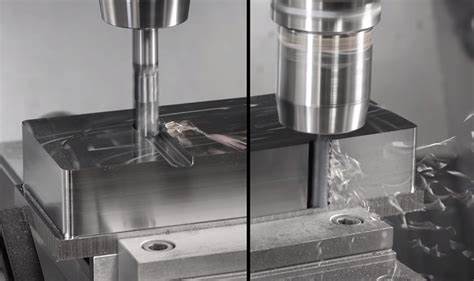
Role of Cutting Tool Geometry and Material
● Tool Geometry: The shape and design of cutting tools, such as the angle and sharpness of edges, significantly affect machining precision and efficiency.
● Material of Tools: High-quality materials like carbide or high-speed steel enhance tool life and performance, especially in demanding machining tasks.
Tool Life and Maintenance: Balancing Efficiency and Durability
● Tool Wear Management: Regular maintenance and monitoring of tool wear are essential to maintain efficiency and ensure high-quality machining.
● Balancing Acts: Choosing tools that offer a balance between cutting efficiency and durability is key to cost-effective machining.
Material Selection and Its Impact on Machining Processes
● Material Properties: The chosen material for the workpiece, such as its hardness and malleability, directly impacts the machining process, tool life, and finish quality.
● Suitability: Selecting the right material for the specific machining process can optimize both the efficiency and quality of the output.
Technological Innovations in Machining
● CNC Advancements: Innovations in CNC technology, like improved control algorithms, enhance machining accuracy and speed.
● Emerging Technologies: Adoption of new technologies such as additive manufacturing and automation is revolutionizing machining processes, leading to improved precision and efficiency.
Advanced considerations in machining involve a deep understanding of tool geometry, the right selection of tool materials, and effective tool life management. Material selection for workpieces plays a crucial role in determining the efficiency and success of the machining process. Additionally, keeping abreast of technological innovations is vital for modern machining, impacting everything from tool design to the overall machining strategy. These considerations are pivotal in achieving high-quality, precise, and efficient machining results.
Team Mfg's Expertise in Roughing and Finishing
At Team Mfg, we take pride in our comprehensive machining services, particularly in the areas of roughing and finishing. Our commitment to delivering tailored solutions with a focus on quality and precision sets us apart in the world of CNC machining.
Comprehensive Machining Services at Team Mfg
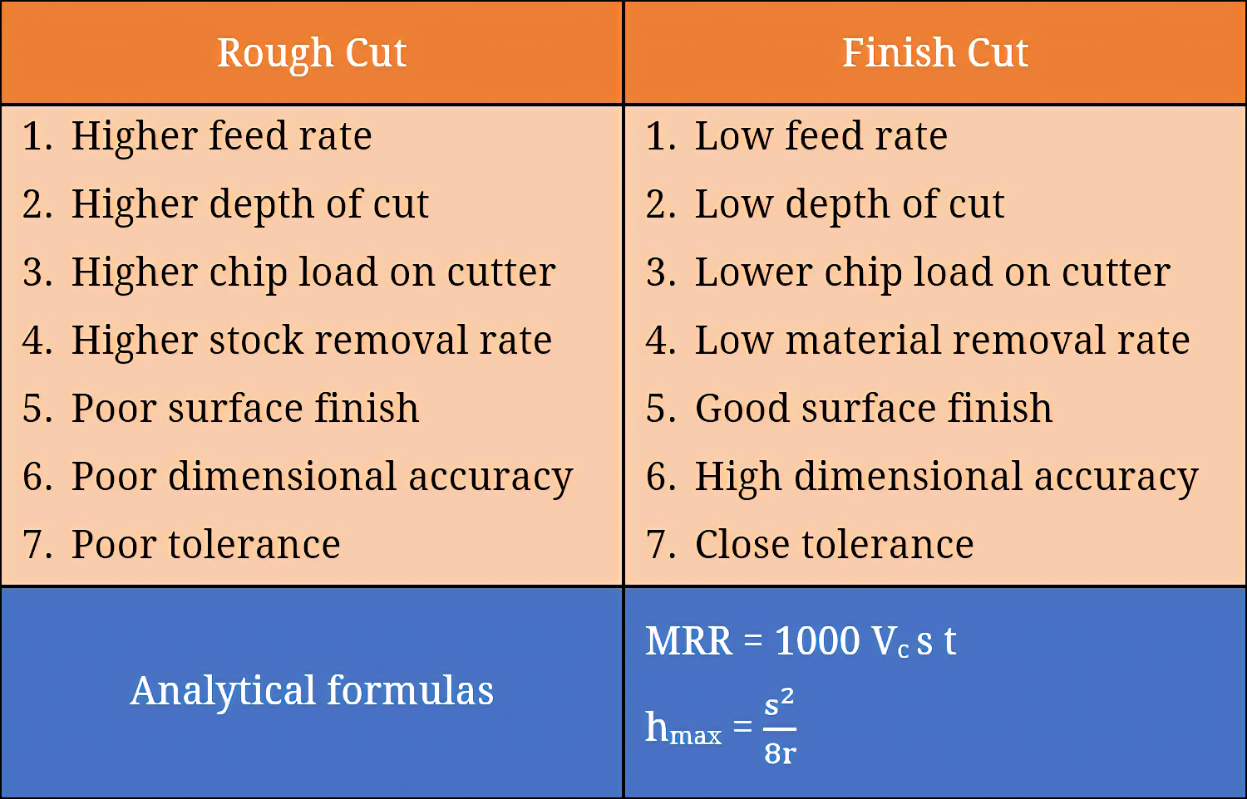
The Importance of Roughing
When it comes to CNC machining, roughing is the foundation upon which precise components are built. It involves the rapid removal of excess material from workpieces, shaping them closer to the desired part geometry. At Team Mfg, we recognize the significance of this initial phase and the role it plays in subsequent machining processes.
Key Points:
- Rapid Material Removal
- Shaping Workpiece Geometry
- Efficient Blank Allowance Removal
The Art of Finishing
Finishing, the final touch in the CNC machining process, is where aesthetics meet functionality. It encompasses refining the surface and properties of fabricated components to meet specific mechanical standards. Team Mfg excels in the art of finishing, ensuring that every part not only looks exceptional but also performs flawlessly.
Key Points:
- Surface Enhancement
- Achieving Mechanical Properties
- Meeting Industry Standards
Tailored Solutions for Varied Machining Requirements
Precision and Efficiency
At Team Mfg, precision and efficiency are at the core of our machining philosophy. We utilize cutting-edge technology and rely on the expertise of our skilled professionals to carry out roughing and finishing processes with unmatched precision. This ensures that the components we produce meet the highest industry standards.
Key Points:
- Cutting-Edge Technology
- Skilled Experts
- Superior Precision
Quality Surface Finishes
Our dedication to delivering excellence extends to the surface finishes of our components. We take pride in our ability to provide parts with exceptional surface quality. Team Mfg's finishing processes are designed to achieve the highest standards, both in terms of appearance and functionality.
Key Points:
- Aesthetic Excellence
- Surface Quality
- Industry-Leading Finishes
Commitment to Quality and Precision in CNC Machining
Team Mfg's expertise in roughing and finishing is a testament to our unwavering commitment to quality and precision in CNC machining. Whether it's shaping the initial workpiece or adding the final touches, we ensure that every component we produce meets the exacting standards of our clients. Our comprehensive machining services, tailored solutions, and dedication to excellence make us the ideal partner for your machining needs.
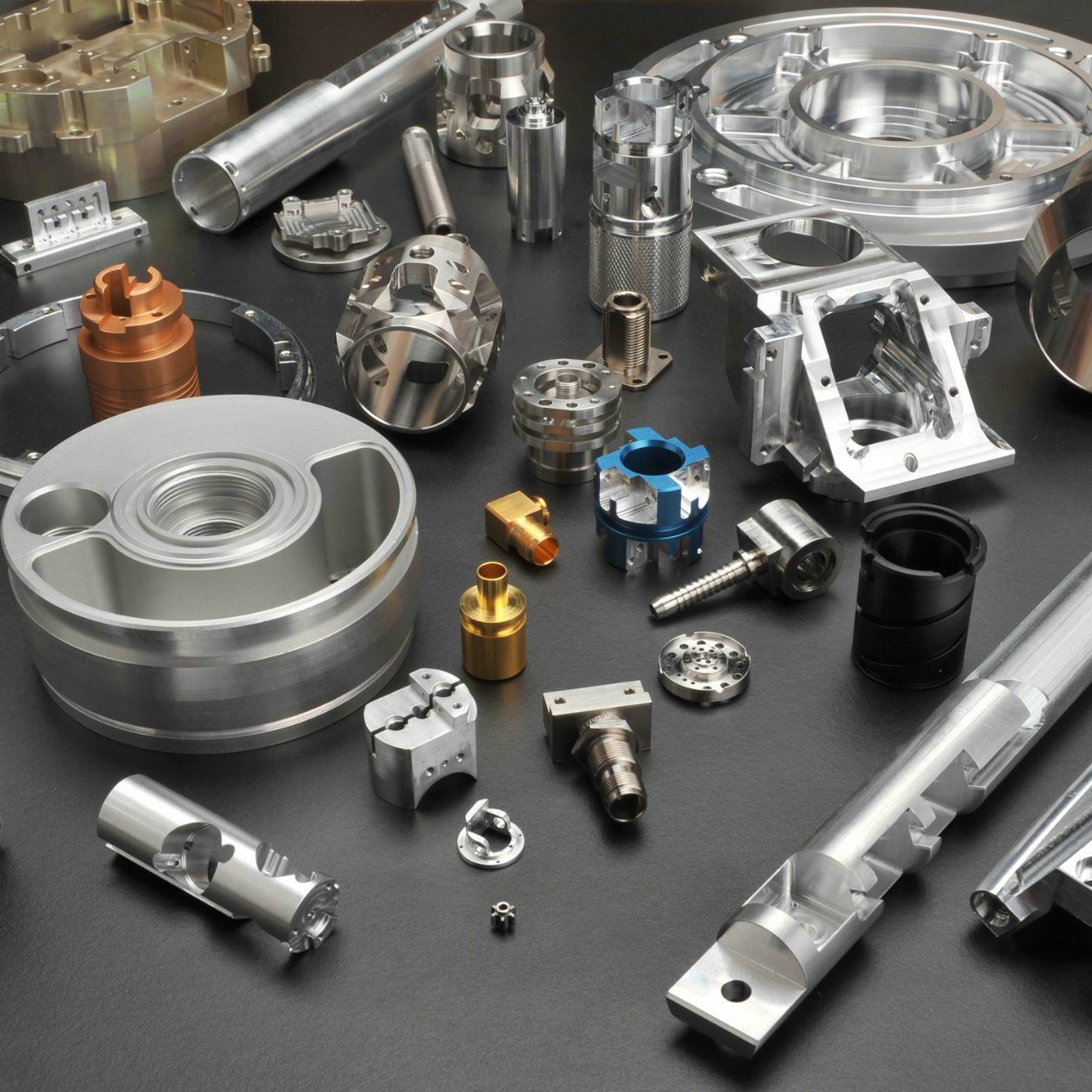
Conclusion
In this comprehensive exploration of CNC machining, we've delved into the intricacies of rough and finish machining, two pivotal stages that define the quality and efficiency of machined products. We began by defining CNC roughing as the initial, aggressive phase of material removal, focusing on feed rate, depth of cut, and cutting velocity. Moving to finishing machining, we emphasized precision and accuracy, critical for achieving superior surface finishes and dimensional accuracy.
Our comparison between rough and finishing machining highlighted their contrasting purposes and approaches, as well as their differing impacts on surface quality, cost, and time efficiency. We also explored effective strategies for both roughing and finishing, including optimizing machining parameters, tool selection, and balancing cost with quality.
Finally, we touched upon advanced considerations in machining, such as the role of cutting tool geometry, tool life management, material selection, and the impact of technological innovations. This journey through CNC machining demonstrates the complexity and precision required to produce high-quality machined parts, underscoring the importance of each stage in this fascinating process.














